“The Coming World: Ecology as the New Politics 2030-2100” at Moscow’s Garage Museum
Russia’s premiere contemporary art institution sparks climate change dialogue with a first-ever, full-museum exhibition

For anyone wary of artist statements on climate change solutions, that isn’t what guests will find inside the Garage Museum of Contemporary Art‘s new exhibition The Coming World: Ecology as the New Politics 2030-2100. There are no answers here: no preaching, proselytizing or condescension. Instead, Moscow‘s Garage Museum (a premiere contemporary art museum and archive) put together a compelling, oftentimes provocative showcase of more than 50 domestic and international artists sharing their vision of the future. It’s meant to initiate dialogue, inspire involvement and increase awareness. Some works may shock, but only gently. This isn’t a proclamation of doomsday; it’s a carefully curated, progressive exhibition that includes work by some of the world’s best artists.

“We actually started with the idea to do something on ecology,” co-curator Ekaterina Lazareva explains to CH. “[Co-curator] Snejana and I were very interested in this, so we suggested an exhibition on environmentalism to Garage’s programming team and it was enthusiastically accepted.” They were offered one corner of the museum—at first. “As we developed the project,” she continues, “everyone understood that it would be difficult to present other exhibitions at the same time, so we were given the whole space—and quite a big period of time.” This is the first time in the museum’s 11-year history that this has happened.
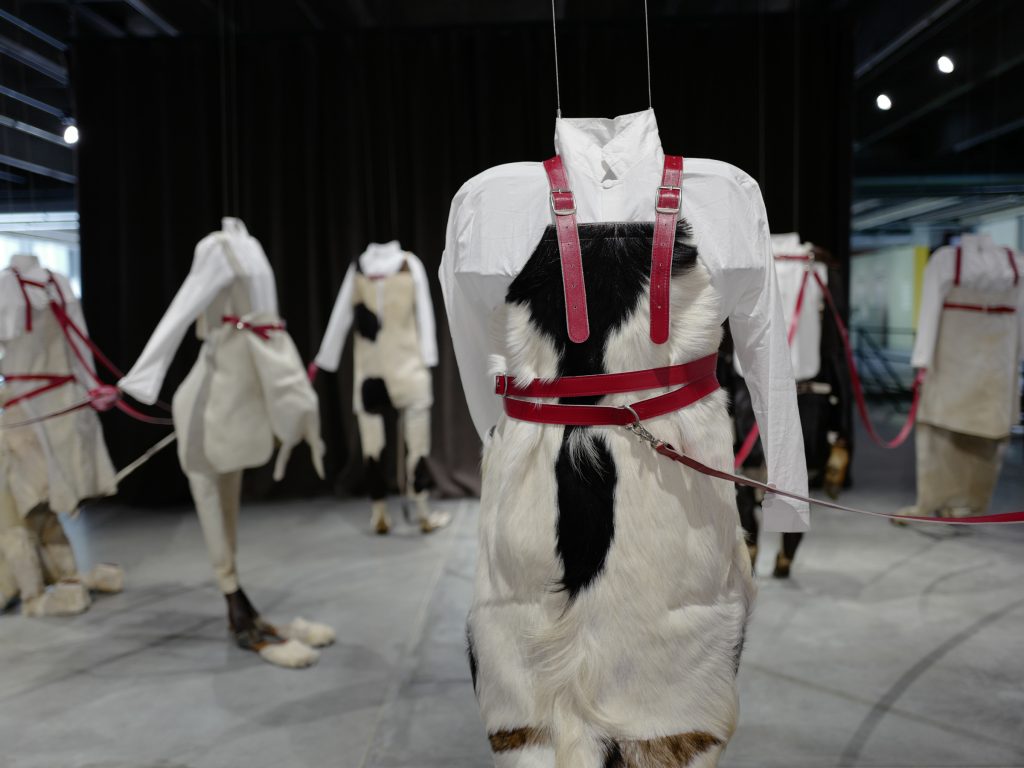
“I can say that it looks like a well-done puzzle,” Lazareva says. In fact, there are two overarching narratives at play, with the art as the pieces, populating and connecting them both. “Visions of the future and the ecological and environmental problems of today were the two themes that had to meet each other,” she continues. “We did a year’s worth of research around the world, making visits to artists’ studios, as part of the curatorial process.”
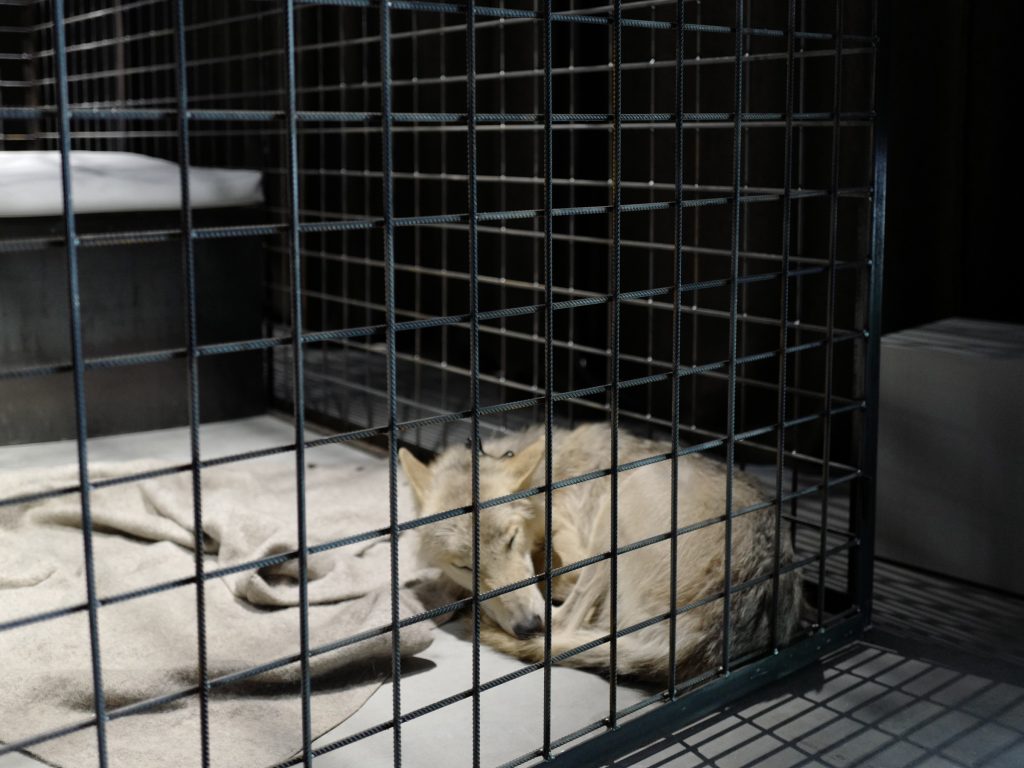
The curators divided the museum into three architectural environments. First, the skylight, “which is a precious place at the heart of the building,” offers a glimpse back in time through a 16th-century tapestry and 17th-century Dutch painting. “Then, the very open central gallery allows us to talk about our present situation,” Lazareva continues, “And then we have the ‘cosmic architecture’—with capsules, where we are showing individual, artistic visions of the future.” The latter portion stuns those passing through. They are comprehensive, transportive micro-museums to be experienced one after another. “When we talk about the future, we always have many scenarios,” Lazareva explains. Thus, these rooms are an opportunity to cycle through the distinct, uninhibited vision of one artist before immersing oneself in the next.
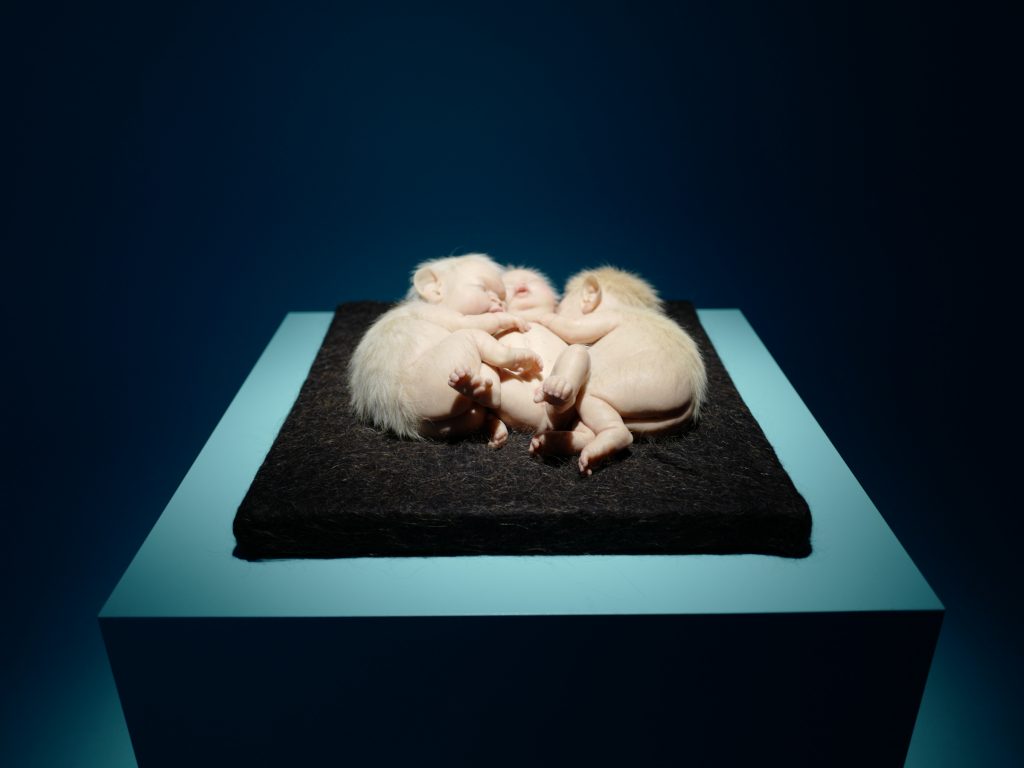
For new works and commissions, Garage asked that each artist aim to have it made in Russia or reconstructed on-site. The goal here was to reduce the museum’s own carbon footprint—and this was one of many green initiatives launched before and alongside the exhibition. Along with several social action directives, Garage did not produce a paper exhibition guide—though their Inclusive Programs Department did develop a video dictionary of environmental terms in Russian Sign Language. And, of course, there’s an online catalogue and audio guides.
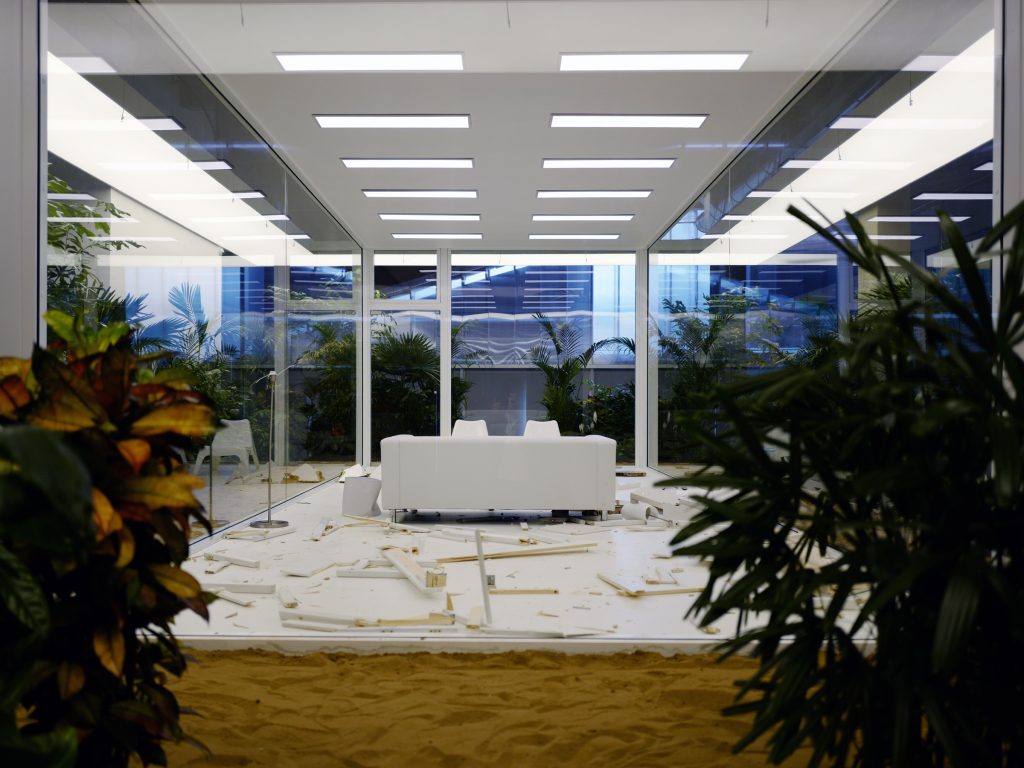
This laundry list of thoughtful benefits runs tangential to the extraordinary art on display. From the museum’s eerie, dangling and oversized cockroach-infested “atrium commission” sculpture by Huang Yong Ping to Doug Aitken‘s “The Garden,” which includes a performance component (wherein a person destroys furniture in an all-white room), powerful pieces rise around every corner. Even those who detest video work will find ample stimulation from John Akomfrah’s six-channel video installation “Purple.” Artist Hayden Fowler, in another live performance, dons a VR headset and locks himself in a cage with a living Siberian wolf (born and raised in captivity); this for sure will be the most controversial of the highlights. And Hans Haacke‘s astounding water and air sculpture, “Circulation” transfixes with its soft, contained movement. To walk through the cosmic architecture, one crosses exemplary works by Tomás Saraceno, Studio Drift and even Maurizio Cattelan.
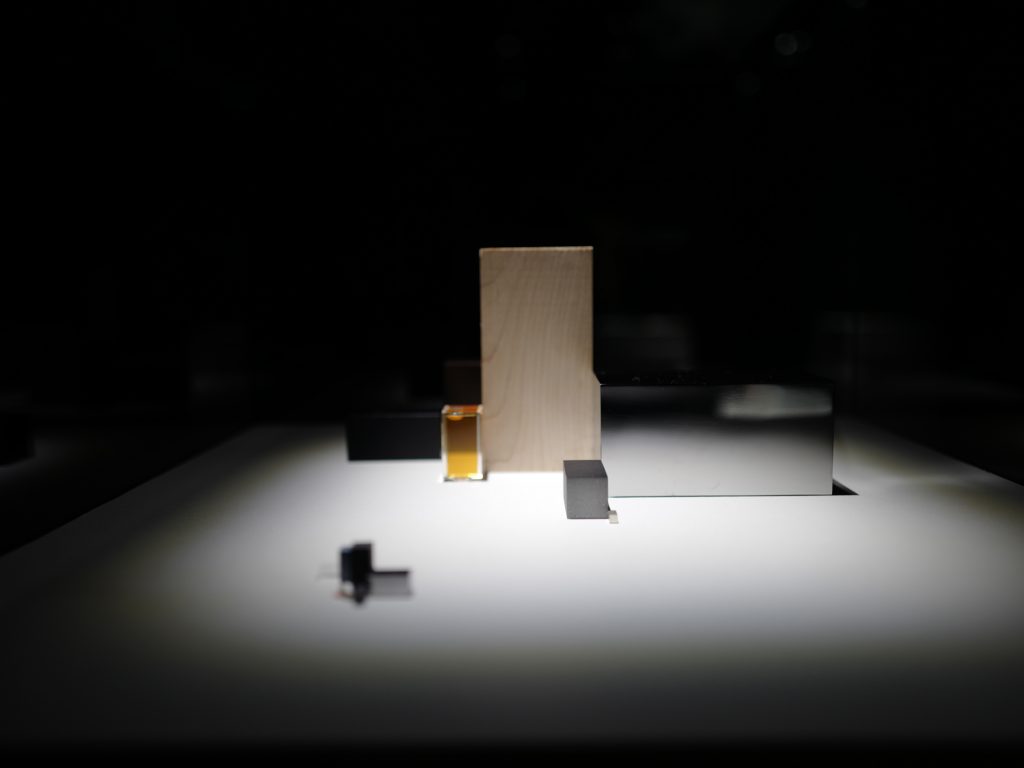
As with any museum of this caliber, thoughtful live programming aims to keep guests returning. One such example premiered opening night: Norwegian artist and musician Tori Wrånes’ visual orchestra, “Lips Don’t Cry.” For this, 40 costumed performers—including a vocalist and numerous accordionists—slowly passed through the lobby and assembled on the stairs. During this 20-minute performance, they expanded and contracted like sonic lungs. This mesmerized attendees and amplified a key message of the exhibition: not one vision or voice, from present day to the distant future, encapsulates or defines the direction of our environment—and with that, we all must pay attention and be involved.
The Coming World: Ecology as the New Politics 2030-2100 will run through 1 December.
Images by David Graver












